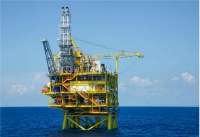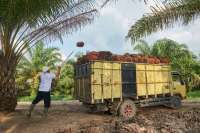MINES - TOBOALI. From the shores of Indonesia's Bangka island, miners like Hendra head out by boat every day to scores of crudely built wooden pontoons dotted off the coast that are equipped to dredge the seabed for lucrative deposits of tin ore.
Indonesia is the world's biggest exporter of tin used in everything from food packaging to electronics and now green technologies.
But deposits in the mining hub of Bangka-Belitung have been heavily exploited on land, leaving parts of the islands off the southeast coast of Sumatra island resembling a lunar landscape with vast craters and highly acidic, turquoise lakes.
Miners are instead turning to the sea.
"On land, our income is diminishing. There are no more reserves," said Hendra, 51, who shifted to work in offshore tin mining about a year ago after a decade in the industry.
Read Also: Oil hits two-year high above $72 on demand hopes, OPEC+ curbs
"In the ocean, there are far more reserves."
Often grouped together around undersea tin seams, the ramshackle encampments of pontoons emit plumes of black smoke from diesel generators that rumble so loudly workers use hand gestures to communicate.
Hendra, who like many Indonesians uses one name, operates six pontoons, each manned by three to four workers, with pipes that can be over 20 metres (66 feet) long to suck up sand from the seabed.
The pumped mixture of water and sand is run across a bed of plastic mats that trap the glittery black sand containing tin ore.
Hendra is among scores of artisanal miners who partner with PT Timah to exploit the state miner's concessions.
The miners are paid about 70,000 to 80,000 rupiah ($4.90 to $5.60) per kg of tin sand they pump up, and a pontoon typically produces about 50 kg a day, Hendra said.
/2021/02/11/1941507696p.jpg)








